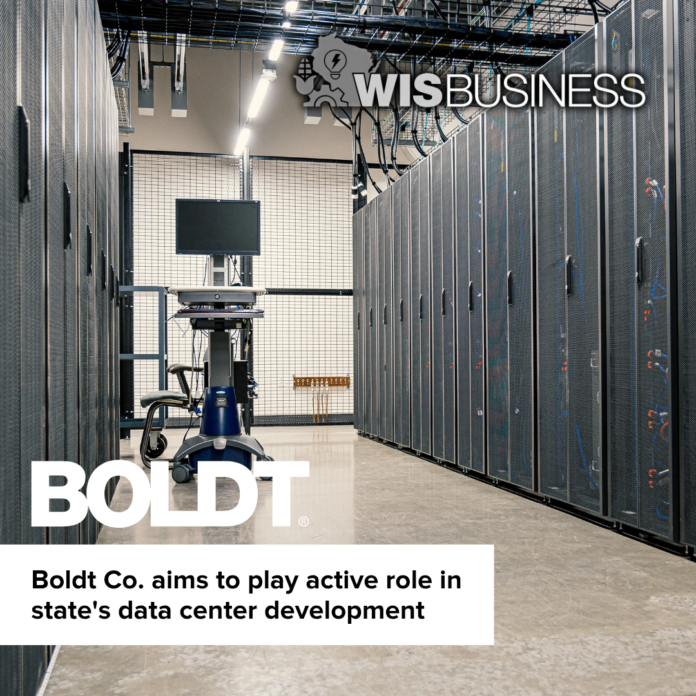The Boldt Company aims to play an active role in data center development in Wisconsin as the state attracts attention from developers and more of these projects arise.
Dale Lewis, the Appleton-based company’s recently appointed director of data centers, yesterday discussed the path ahead for Boldt’s new division focused on this sector. He previously worked for Microsoft as the tech company’s director of construction for its campus in Mount Pleasant.
“It’s an emerging market sector that’s very hot right now, volatile in its growth,” he said yesterday. “There’s a lot of cash being injected into this market sector on a global scale, and Wisconsin is starting to gain the attention of data center developers, and is rapidly becoming a hotter market.”
Before joining Microsoft, Lewis had been working for Walsh Construction, the primary general contractor for the first phase of the company’s Mount Pleasant project. He was then recruited by Microsoft to lead construction for that project, and was connected with Boldt as the general contractor was doing structural steel, concrete work and more for the campus.
While Boldt has worked on smaller data center projects across the country, Lewis noted the Microsoft campus was the first of its kind given its large scale and focus on AI.
“As Wisconsin becomes more and more attractive to developers, for whatever reason, Boldt being a large contractor in the state wants to make sure that we participate in Wisconsin’s growth and help guide the industry through our collective expertise,” he said.
He noted the state has seven “hyperscale” data center projects either proposed or scheduled for construction.
“Boldt’s intent with standing up this division is to play an active role in some of that development, so we’re out pursuing and building relationships with developers, having those conversations on how Boldt could offer value,” Lewis said.
Typical campus-style data center projects are energy-intensive installations that require working with the local utility to develop substations to power them, he said. But he added the industry is evolving rapidly, with some centers leaning more on renewable and low-emission energy sources. Others are looking to generate their own energy, Lewis said, noting small modular reactors are one avenue for leveraging nuclear energy to power data centers.
“But for the interim right now, over the next couple of years, the reliance on the local utility is paramount for data center development,” he said.
Meanwhile, data center designers are “getting more creative” in minimizing their projects’ impact on both infrastructure and ecology, Lewis said. Along with SMRs, carbon-neutral fuel cells and low-CO2 natural gas power plants, he noted data centers are exploring closed-loop cooling systems.
“We are getting away from impacting local resources like water,” he said, adding “you fill it once, just like a car’s radiator system … and there’s no additional water usage once the system is initially filled. So we’re finding creative ways to become more energy-efficient and friendly to the ecology of the state or any surrounding area.”






